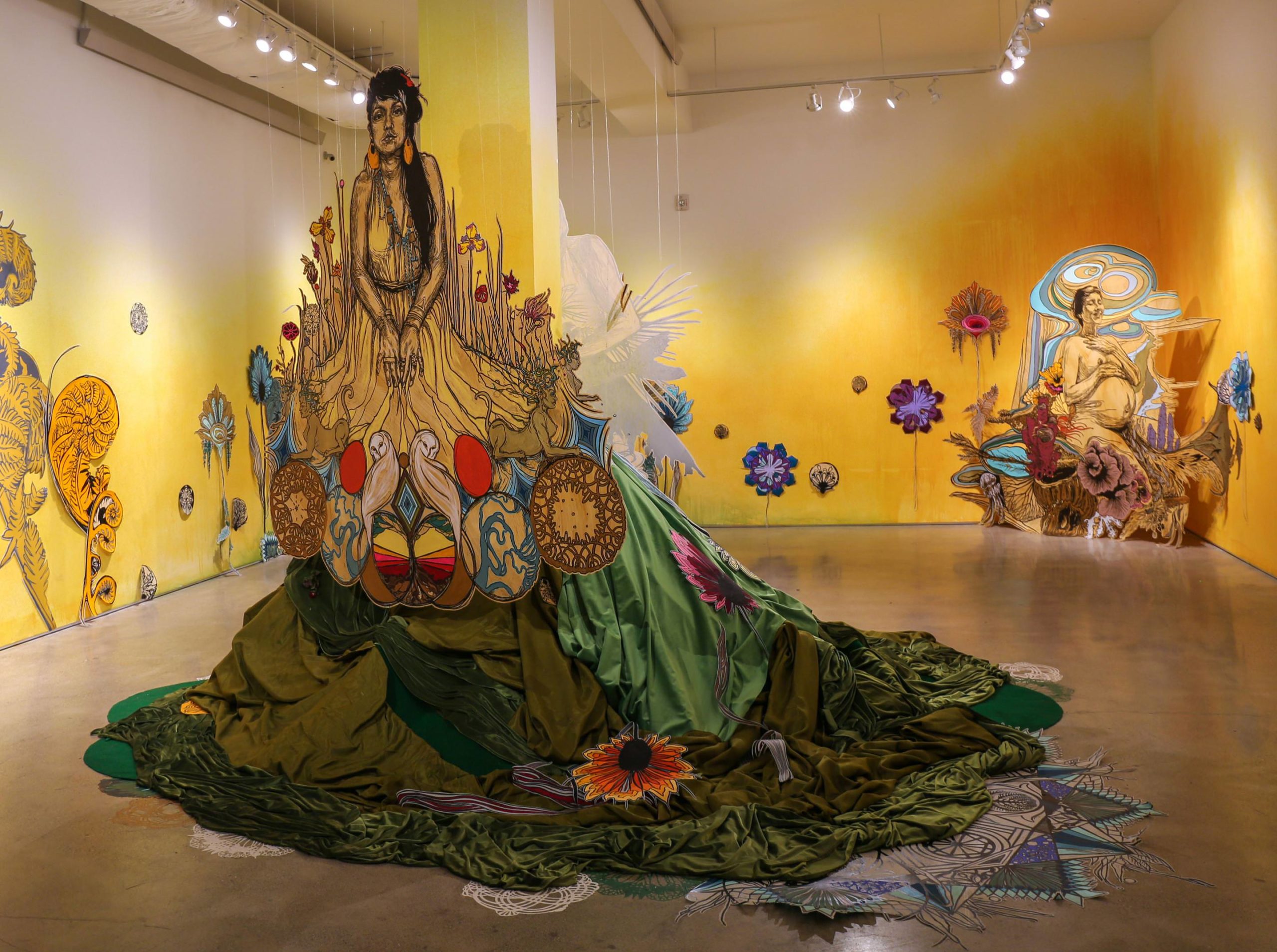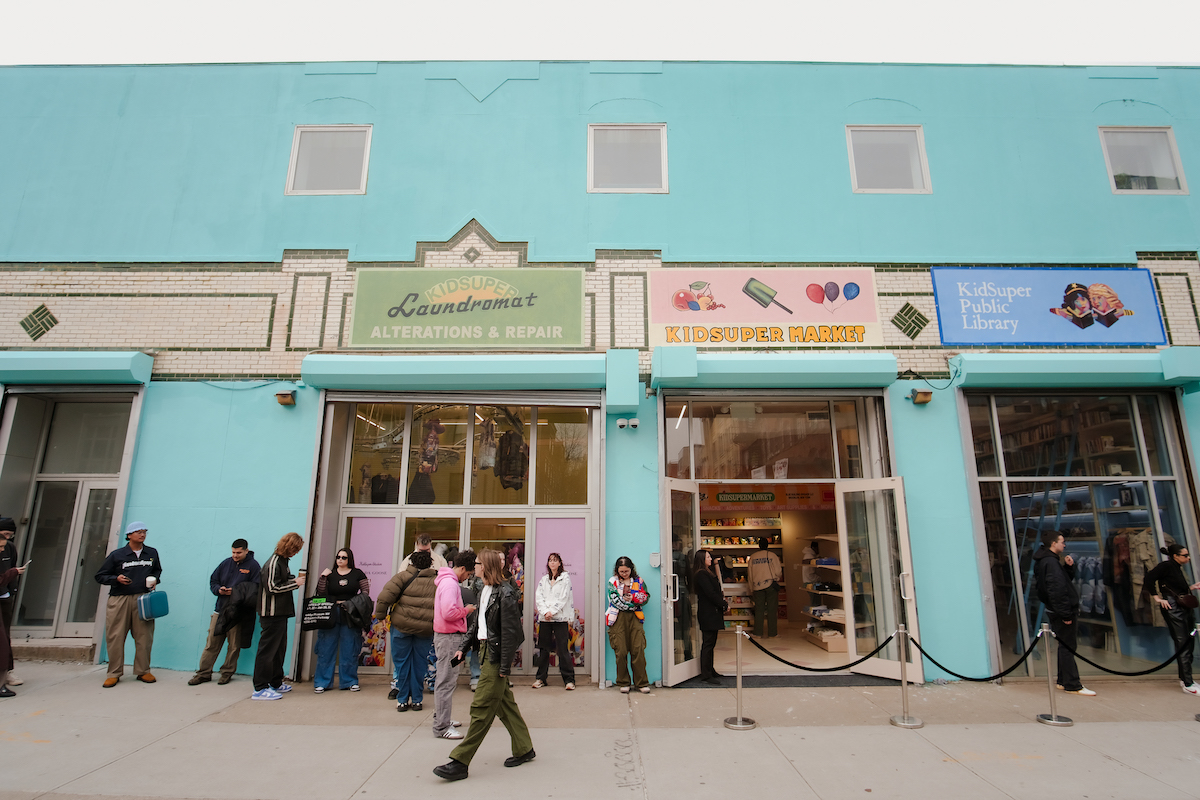By nature, Caledonia Curry, better known as Swoon, is attracted to people. Her work reflects that, inviting onlookers to experience it with and without her—on the streets, in galleries, and within museums. You may have seen her wheat-paste pieces strewn across the sides of industrial buildings, or perhaps on view in international art shows. Maybe you’ve heard of her wearing her heart on her sleeve, helping people heal from natural disasters and unnatural crises. However you know her, it’s clear she is a creator—and a careful, punctilious one at that.
To better understand her recent projects and her place in the art world (arguably as one of the first American female artists to work within a medium of this kind), Whitewall met with Curry at her studio in Brooklyn. She shared with us a recent realization about her fantastic immersive installations—they stem from an early need to create a reality that’s okay to be in.
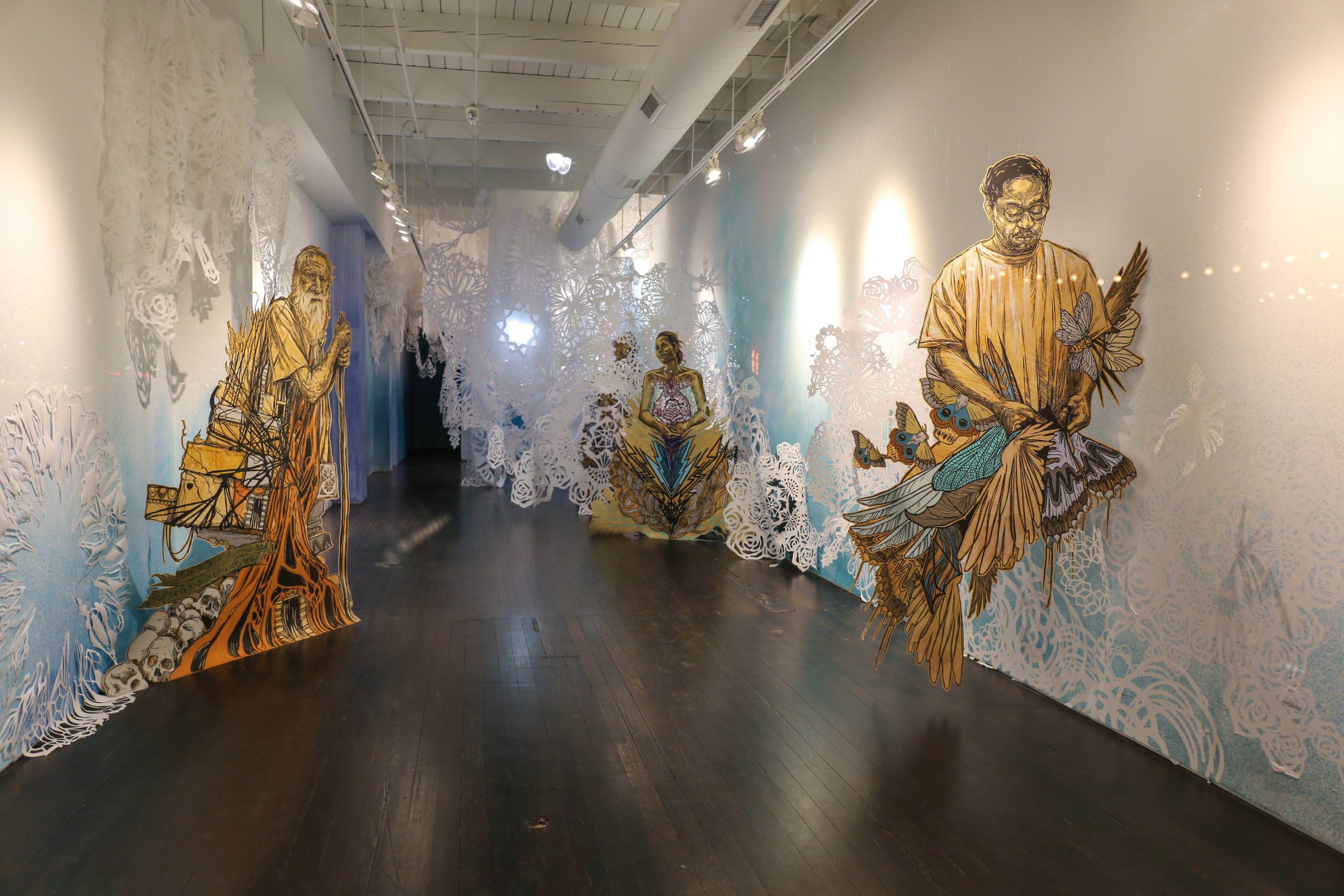
Exhibition view of “Thalassa” at the Detroit Institute of the Arts (September 24,2016-June 25,2017).
Photo by Molly Krause.
Courtesy of Swoon.
WHITEWALL: Tell us about the site-specific installation Thalassa, which depicts the Greek goddess of the sea and is about 15 feet tall and 400 pounds. It was first seen in the grand atrium of the New Orleans Museum of Art (2011), was recently on view at The Detroit Institute of Arts (September 26-March 2017), and is now in the museum’s permanent collection.
SWOON: It was created site-specifically for the New Orleans Museum of Art. At the time, there was the big oil spill that had just happened in the gulf. As a Florida person, I was crying almost every day, thinking about the level of devastation that was happening to the ocean. So being in New Orleans, I was thinking about the human relationship to nature, and about the sea.
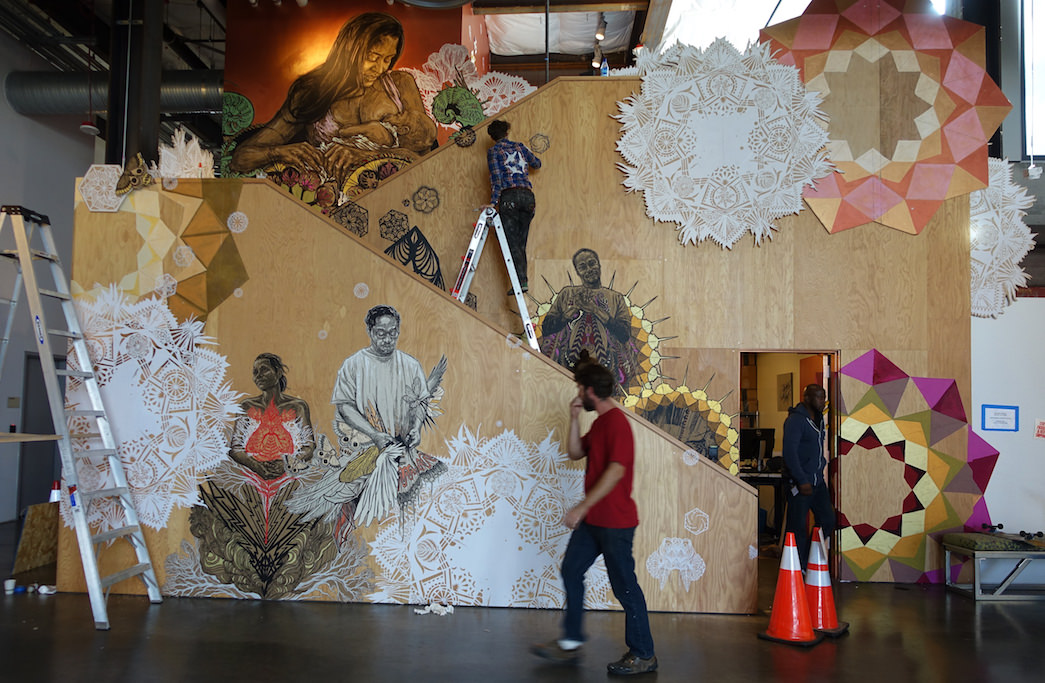
Swoon and her team install a site-specific work at Facebook Headquarters in Palo Alto, California.
Photo by Swoon Studio.
Courtesy of Swoon.
WW: So do you tend to tailor your pieces for the setting that they’ll be in?
S: The piece is generally created for a specific environment, so that affects it a lot. When a museum asks me to do a piece, I will usually look at the building architecturally, and then respond. I’m doing a solo show, my first retrospective, in September in Cincinnati—at the Contemporary Arts Center in the Zaha Hadid–designed building—and I’m looking at the building, and the feature of it is a staggered ceiling. So I’m thinking of how I will specifically work with that. Often, I will start by implanting an idea. It’s not always so literal what comes out of it. Sometimes I just plant the seed and see what happens.
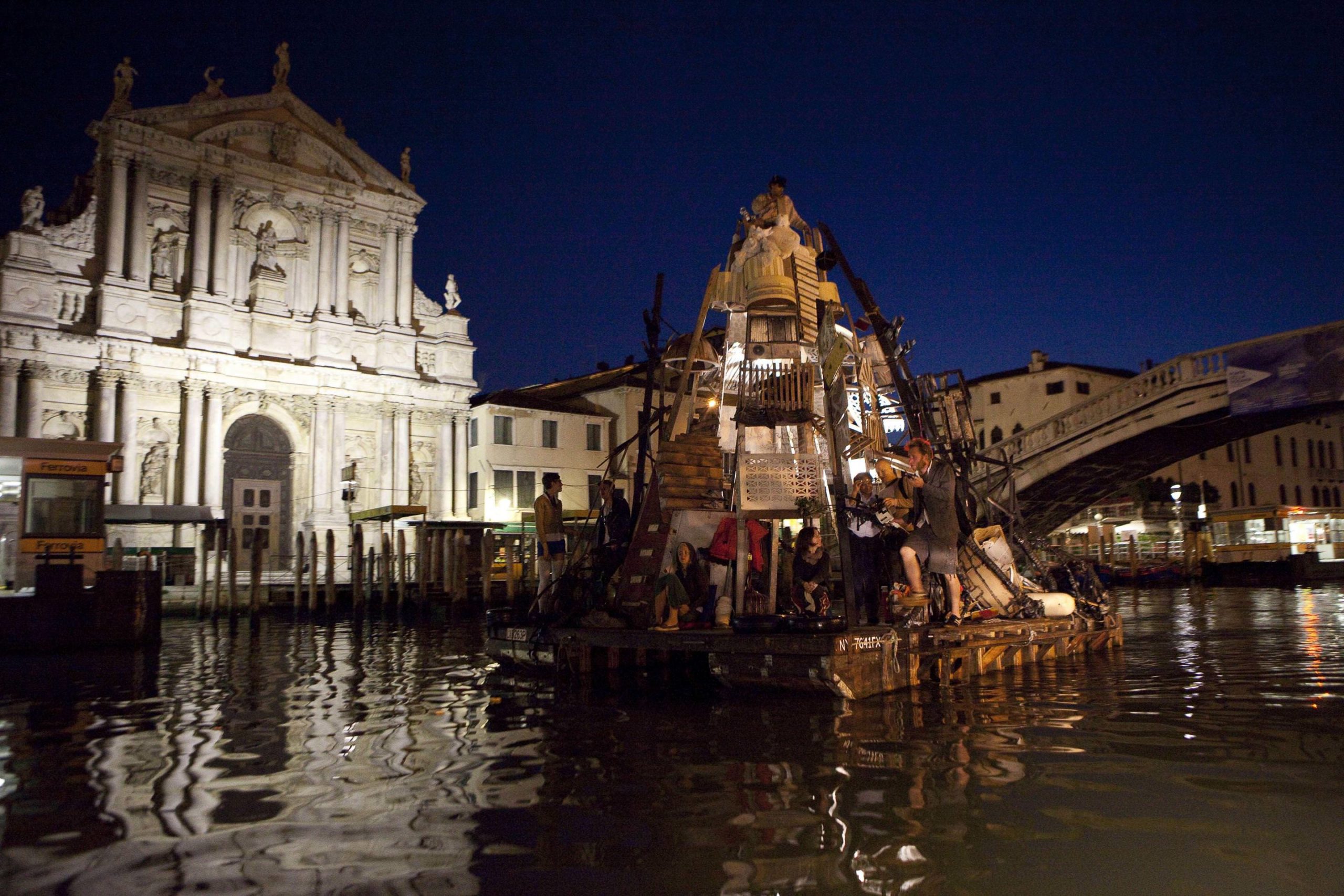
Swimming Cities of Serenissima: Stopping along the way to perform live music, puppetry, and more, Swoon and 35 artistic collaborators sailed across the Adriatic Sea from Slovenia to the 2009 Venice Biennale.
Photo by Tod Seelie.
Courtesy of Swoon.
WW: Is the subject matter different in terms of the cities that they’re in?
S: Not every time. It depends on what’s going on. There’s a site-specific piece, or just an intensive installation that I made at MOCA in L.A., and that was very much personally themed. Rather than working with architecture specifically, I created a kind of cocoon around the piece for it to be experienced in. There are times when I’m responding architecturally and socially, and there are times when I’m just making something because I need to make it, and letting it exist in that environment, or making a new environment for it to exist in.
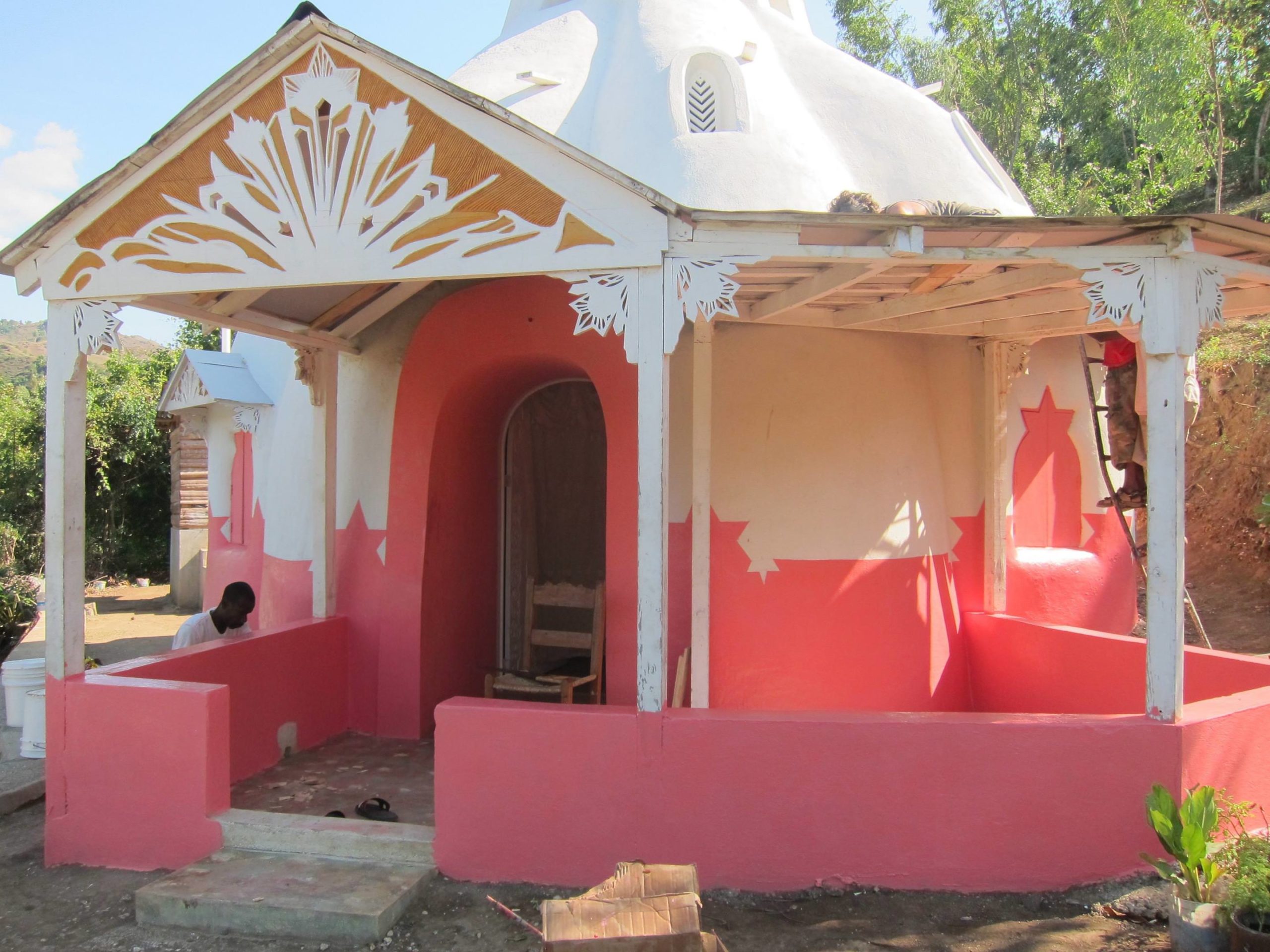
A building constructed as art of the Konbit Shelter Project, a comprehensive and locally sustained community building initiative in post-earthquake Haiti.
Photo by Tod Seelie.
Courtesy of Swoon.
WW: You had a solo show at the Brooklyn Museum in 2014 entitled “Submerged Motherlands” that married site specificity and the city in which it was presented in. Can you tell us a bit about how those two ideas intertwined?
S: The premise of that show was layered. I started a raft project in 2008, which had a lot of themes. Rising sea levels, coastal cities and their vulnerabilities . . . and creating a slightly fantastical version of that. We went to Venice, and I remember specifically (before the economic crash, before Sandy, before a lot of things happened) trying to talk to journalists, and they’d ask about the work, and I’d try to talk about climate change, and no one would ever repeat it in an article.
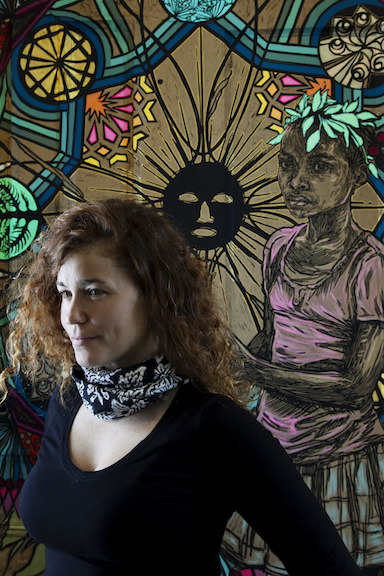
Swoon.
Photo by Steven Benisty.
Flash-forward to 2013, and the Brooklyn Museum asked me to do a show. I thought, “Okay, I think people in New York are ready to talk about this because we experienced a flood. We know what it means to feel vulnerable.” So I brought back the boats and a body of work that I had been working on for many years, and tied together those themes. At the same time, my mom got sick with cancer and passed away. It was very intense. I found that I couldn’t just think about climate change, but I was also thinking about the loss of my own mom. So I tied together two kinds of thinking. The idea of climate change for me is that you’re losing the ground you stand on, and then when you lose your mother, you’re losing your original homeland.
WW: When you were studying at Pratt, what originally drew you to begin working with wheat-paste prints and paper cutouts?
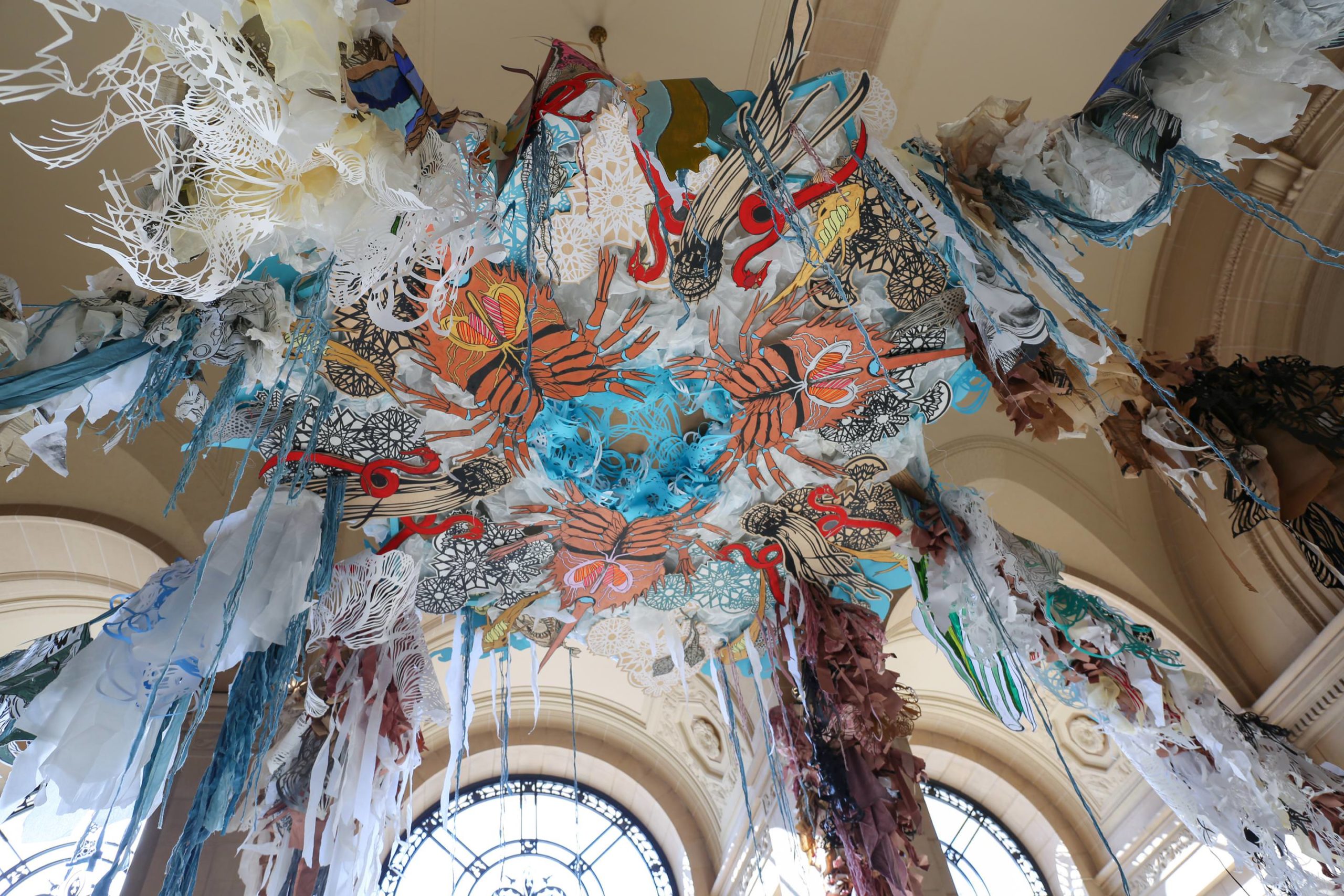
Exhibition view of “Thalassa” at the Detroit Institute of the Arts (September 24,2016-June 25,2017).
Photo by Molly Krause.
Courtesy of Swoon.
S: I wanted to work outside, and wheat paste is one of the ways you work outside, but I’m so fussy. I’m not one of those people who has mad can styles—beautiful and fast. I’m like, “Ehhh, I need to draw this face 17 times, and it’s going to literally take me one month to make.” I knew I wanted to make things that I knew could be a part of city walls, but that I needed to make them in my own way. I was obsessed with graffiti, but I’m from this small-ass town. The only graffiti I literally ever saw in Daytona was “Vampires Do Live in Daytona” spray-painted on the boardwalk.
WW: How did and do you feel being one of the only women working with wheat paste then and now?
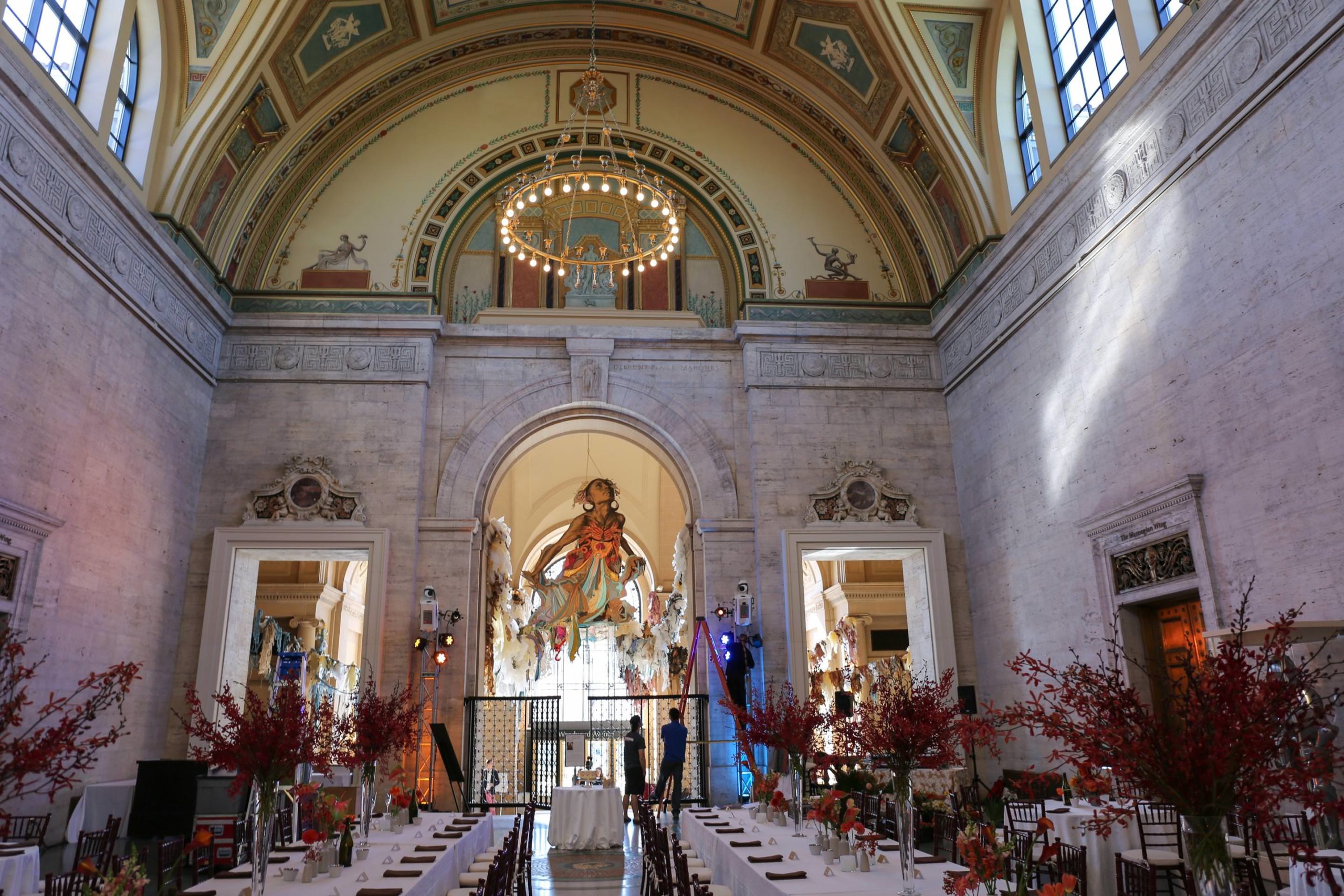
Exhibition view of “Thalassa” at the Detroit Institute of the Arts (September 24,2016-June 25,2017).
Photo by Molly Krause.
Courtesy of Swoon.
S: I definitely felt supported. I think a lot of people always expected that I would feel alienated, or it would be really tough for me, but I found that it was almost the opposite, because I wasn’t trying to insert myself in the traditional graffiti scene where people follow an ethos. There’s a whole culture built up, and a way of doing things, but I was coming up in a scene that was utterly brand new. And I actually feel like being a woman in a man’s field is fun. You’re a weirdo. And all the guys treat me like their kid sister. Shepard Fairey and JR and all these other guys gave me tons of support for who I actually was, and I thought it was great.
WW: Your work connects such a large audience—children, elderly, people of color. If anything interests you the most about creating immersive installations, where it seems they’re all comfortable, what would it be?
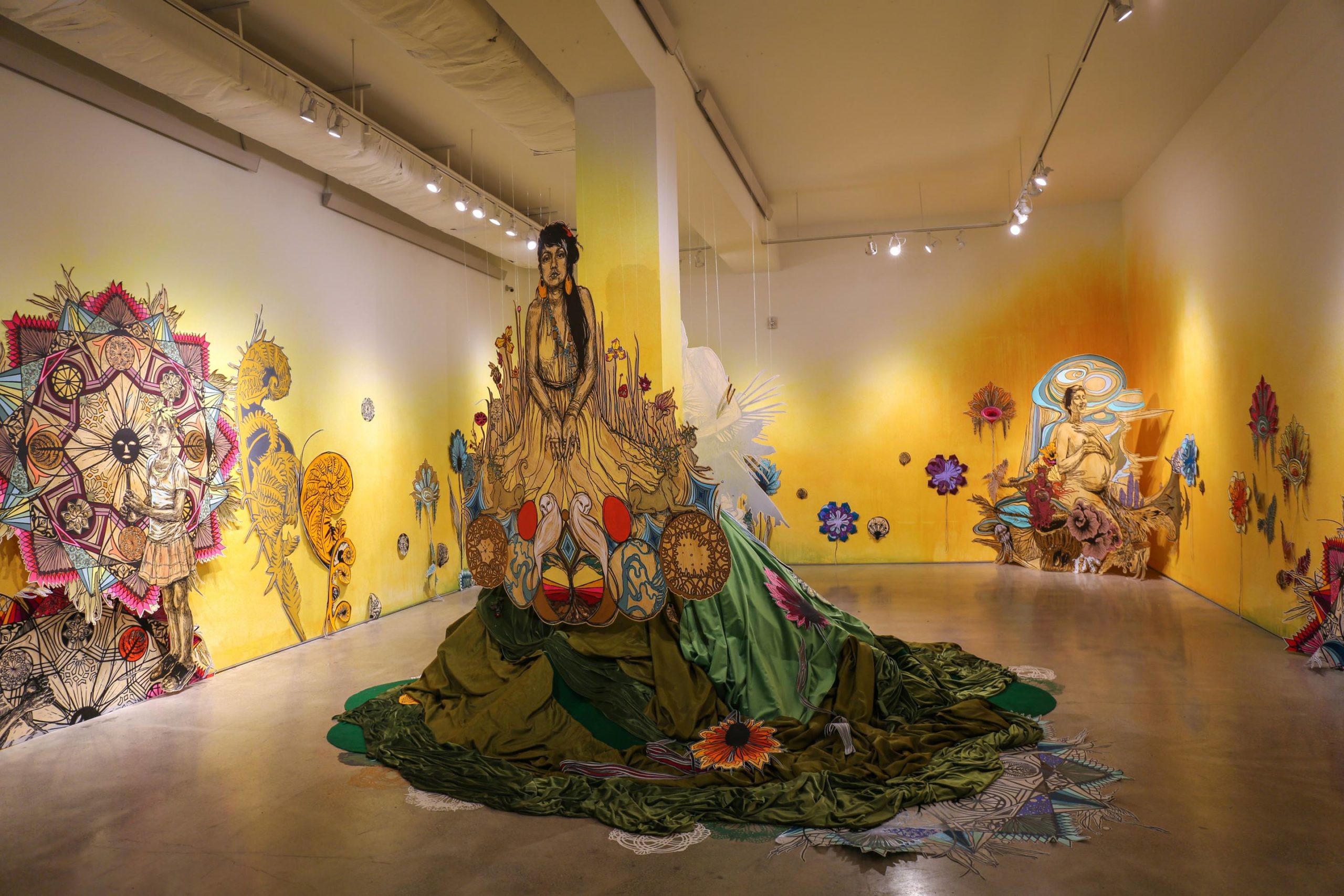
Exhibition view of “Thalassa” at the Detroit Institute of the Arts (September 24,2016-June 25,2017).
Photo by Molly Krause.
Courtesy of Swoon.
S: That’s exactly what interests me! I just want to connect people—even two people. And I’ve always felt that way about work on the street. You get this opportunity to connect with people who wouldn’t set foot in a museum in a million years. They’re walking by the piece, and it’s on their block—they know who that’s for.
Also, my parents were junkies when I was little. It was so hard. When your parents are on whatever they’re on, they make really bad choices about who should be in the house, about what’s happening in the house, what you should witness—everything. The environment of that life can be so unbearable. My dad told me this story of a memory he had when my parents were at their worst. There was a big fight happening in the house, where things were getting smashed and shit was just going down, and he said he had a moment of clarity to ask himself where the kids were. He said he looked over and saw me with my back turned, my face in the corner, and I was just coloring as though none of it was even happening.
So I had this really strong realization the other day. The reason that I’m so good at making immersive environments is because I’m really good at making a reality that’s okay to be in. The creation of the installations takes that a step further so that you can go inside a fantasy world. I think I really survived because I could protect myself psychologically. I’m hyperaware because I’ve had to look out for myself. That whole process of keeping your eyes open, having extreme empathy, and creating another reality—that’s one of my goals for sharing pieces. Sharing my process of empathetically connecting with people in a drawing, and then opening that up for other people to connect with when seeing the work . . .
WW: Can you tell us a bit about your nonprofit organization, the Heliotrope Foundation, and your continued involvement in working with others to provide shelter for those in need in Haiti, New Orleans, and North Braddock, Pennsylvania?
S: I started the project in Braddock, and Konbit Shelter as a response to the earthquake, and had been working with a group in New Orleans called Airift. I had been working with these projects that were essentially responses to crisis, like the slow-motion economic devastation in Braddock and the crisis in Haiti of the earthquake. And even the project in New Orleans, while it’s very different now, it started as a response to Katrina—kind of an arts response. I realized that was a big group effort, and they had a philosophy that connected them. It was about creativity as it confronts crisis, and about this belief that the skill set of artists and the creative problem-solving mindset of artists, and the compassion that so much of the creative community possesses, could be put to specific use in the day-to-day problems and the big major catastrophes that society faces. I’m saying, “What are the artists’ responses? How do we support them? How do I get some support to finish these projects, and then as so projects are finished, open the gateway to be able to support other artists’ visions that work in the same philosophy?”
WW: What are your plans for the next few months?
S: In mid-September, there’s going to be my first survey show in Cincinnati. It’s going to focus on all my work ever since I first started working out on the street, and making sort of a visual tapestry timeline of all the different portraits and works. There’s also going to be a small side exhibitions that deals with rafts or Heliotrope projects. It’ll be a way of looking at things in terms of a trajectory of my whole career.
And then in 2018, I’m going to try and take most of the year off and make an animated film. But who the fuck knows what it’s going to be about? That’s what’s so exciting to me because, one, I have no idea what I’m going to do. I’m going to try and scale my life down a little bit, not accept any new projects for the year, and then I’m just going to go film shit and see what kinds of narratives emerge.
This interview was published in the spring 2017 issue of Whitewall, out now.


